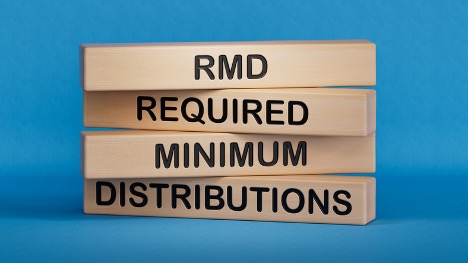Definition & Calculation
As you prepare for retirement, understanding the Required Minimum Distribution (RMD) is crucial for managing your tax-advantaged accounts. An RMD is the minimum amount you must withdraw yearly from certain retirement accounts once you reach the age of 73. This article will explore the definition of RMDs, how they work, and how to calculate them to ensure you comply with IRS regulations while optimizing your financial strategy.
Understanding Required Minimum Distributions (RMDs)
While planning for retirement, it’s vital to understand the role of Required Minimum Distributions (RMDs). These are mandatory annual withdrawals you must take from certain retirement accounts once you reach age 73, helping ensure that taxes are eventually paid on tax-deferred savings.
Definition and Basic Concepts of Required Minimum Distributions
Below is a brief overview of RMDs, which are the minimum amounts you must withdraw from your tax-advantaged retirement accounts, such as traditional IRAs and 401(k)s, starting at a specified age. This process prevents you from indefinitely deferring taxes on your retirement savings.
Types of Retirement Accounts Subject to RMDs
Types of accounts subject to RMDs include:
| Account Type | Description |
| Traditional IRA | Standard retirement account with tax-deferred growth. |
| 401(k) | Employer-sponsored retirement savings plan. |
| 403(b) | Retirement plan for certain nonprofit employees. |
| 457(b) | Deferred compensation plan for state and local government employees. |
| SIMPLE IRA | Employer-sponsored plan for small businesses. |
- Recognizing the specific account types and their RMD obligations can help you plan your withdrawals effectively.
Alongside traditional IRAs and various employer-sponsored plans, it’s important to understand that Roth IRAs generally do not require RMDs unless inherited. However, other accounts, such as SIMPLE and SEP IRAs, also enforce RMD rules, emphasizing the need to strategize withdrawals. Adhering to these rules helps maintain compliance and avoid penalties.
- Recognizing the importance of understanding these rules will enable you to manage your retirement savings efficiently.
| Account Type | RMD Requirement |
| Traditional IRA | Yes, starting at age 73. |
| Roth IRA | No, unless inherited. |
| 401(k) | Yes, starting at age 73. |
| 403(b) | Yes, starting at age 73. |
| 457(b) | Yes, starting at age 73. |
Required Minimum Distribution Purpose and IRS Requirements
Understanding the purpose behind Required Minimum Distributions (RMDs) is key to managing your retirement planning effectively. The IRS mandates RMDs to ensure you do not indefinitely defer taxes on your retirement savings. This regulation compels you to withdraw funds from tax-advantaged accounts, prompting tax payments and ensuring that your retirement funds are eventually distributed rather than left untouched as an inheritance.
Required Minimum Distribution Tax Implications
An RMD is considered taxable income, meaning the amount you withdraw is subject to the same taxation rules as other retirement distributions. This taxation can impact your overall income tax liability, so strategically planning your withdrawals to minimize potential tax burdens is important.
Government Regulations Regarding Required Minimum Distributions
On top of taxation, the IRS has outlined specific rules regarding RMDs that you must adhere to. As of age 73, you must start taking distributions each year, with stringent penalties if you fail to do so, including a hefty 25% tax on undistributed amounts.
Also, there are various life expectancy tables the IRS provides to aid in calculating your RMDs, based on your age or the age of your beneficiaries. These regulations are in place to facilitate tax revenue and ensure that retirement savings serve their intended purpose. Understanding these rules will help you avoid penalties and manage your financial future more effectively.
RMD Calculation Methods
Understanding the methods for calculating Required Minimum Distributions (RMDs) is vital to ensure compliance and manage your retirement funds effectively. RMDs are calculated based on your retirement account balance as of December 31 of the previous year, divided by a life expectancy factor determined by the IRS, using one of three life expectancy tables appropriate to your situation.
Life Expectancy Tables Overview
You can identify the appropriate factor for your RMD calculation by referring to the IRS life expectancy tables. These tables vary based on your circumstances, such as whether you are a beneficiary, married, or single. The three tables, Single Life Expectancy, Joint and Last Survivor, and Uniform Lifetime help you determine how much you need to withdraw each year.
Required Minimum Distribution Calculation Formula and Examples
Tables offered by the IRS provide the necessary life expectancy factors to compute your RMD. For example, if you have a traditional IRA with a balance of $250,000 as of December 31 and are 73 years old, you will use the Uniform Lifetime Table, where the factor is 24.6. Thus, your calculation would be $250,000 divided by 24.6, resulting in an RMD of approximately $10,160.
Consequently, understanding the calculation formula and examples allows you to plan your withdrawals accurately and avoid penalties. As an example, if you inherited a retirement account with a $250,000 balance as of the previous year and are 73 years old, your RMD would be calculated using the Single Life Expectancy Table, leading to different factors and required withdrawals. Knowing how to apply these methods can ultimately aid you in managing tax obligations and better utilizing your retirement savings.
Important Age Requirements for Required Minimum Distributions
Understanding the age requirements for Required Minimum Distributions (RMDs) is imperative for financial planning. You must begin withdrawing funds from your retirement accounts once you reach a specific age to comply with IRS regulations and avoid penalties.
Current RMD Age Rules
Before 2023, the RMD age was set at 72. However, it has been updated to 73, meaning that you must start taking distributions by this age in 2024. If you were born after 1950, this new age requirement applies to you.
Required Minimum Distribution Deadline Requirements
To avoid penalties, you must take your first required minimum distribution by April 1, following the year you turn 73. Each subsequent withdrawal must be completed by December 31 of each year. It’s important to plan accordingly to ensure you meet these deadlines.
Failing to take your RMDs on time can result in a hefty penalty of 25% on the amount you should have withdrawn. Understanding these deadlines can help you better manage your retirement withdrawals, minimize tax liabilities, and ensure compliance with IRS rules, safeguarding your financial future.
Special Considerations for Different Account Types
All retirement accounts have unique rules for required minimum distributions (RMDs). Understanding these differences can help you plan your withdrawals more effectively. Consider the following:
- Traditional IRAs require RMDs starting at age 73.
- Roth IRAs do not have RMDs unless they are inherited.
- Employer-sponsored plans may have different timelines.
- Inherited accounts follow specific guidelines based on beneficiary status.
- Tax implications vary based on account type and withdrawals.
The specific rules for each type of account can impact your financial strategy significantly.
| Account Type | RMD Requirement |
| Traditional IRA | Begins at age 73 |
| Roth IRA | No RMD unless inherited |
| 401(k) Plan | Begins at age 73; may differ based on employer |
| 403(b) Plan | Begins at age 73 |
| Inherited IRA | Withdraw within 10 years for non-spouse beneficiaries |
Traditional IRA Rules
Some traditional IRAs require RMDs to be calculated annually, starting at age 73. The amount is based on your account balance and a life expectancy factor, ensuring you withdraw specified amounts to meet tax obligations.
Employer-Sponsored Plan Requirements
Different employer-sponsored plans, like 401(k)s and 403(b)s, have their own RMD rules and may allow for deferral of distributions until retirement. Each employer may vary in how they manage RMDs, so it’s important to check with your plan administrator for specific details.
Considering your employer-sponsored plan’s rules can be critical for effective retirement planning. While RMDs typically start at age 73, employers might allow delay options depending on company policies. You could also manage RMDs from multiple accounts more flexibly by withdrawing from funds as needed, ensuring you meet minimum withdrawal requirements without financial strain.
Inherited Account Rules
Your inherited retirement accounts come with specific rules regarding withdrawals. Beneficiaries must adhere to the IRS requirements to ensure compliance and avoid penalties. If you inherit a traditional or Roth IRA, understanding your obligations is vital, particularly in terms of minimum distributions. The guidelines vary depending on whether you are a spouse or a non-spouse beneficiary.
Spouse Beneficiary Guidelines
One significant advantage for spouse beneficiaries is flexibility in managing the inherited IRA. You can choose to continue as a beneficiary, take ownership of the account, or transfer funds into an existing IRA, allowing RMDs to be calculated based on your life expectancy.
Non-Spouse Beneficiary Requirements
Before you can access an inherited IRA as a non-spouse beneficiary, it is necessary to pay any RMD owed by the deceased for the year of death. After that, you must transfer the funds into a specific inherited IRA and withdraw the entire amount by the end of the tenth year following the original owner’s death. You are not required to take annual RMDs in that ten-year span, providing flexibility in your withdrawal strategy.
The rules for non-spouse beneficiaries have specific stipulations that require you to act promptly. Failing to meet the withdrawal deadline can lead to significant tax penalties, including a 25% penalty on any remaining balance. It is beneficial to understand your withdrawal options, which can be done in various ways—whether taken all at once or staggered over ten years. Consulting with a financial advisor can also help you navigate these complexities effectively.
Final Thoughts
Following this overview of Required Minimum Distributions (RMDs), you now understand the importance of these mandatory withdrawals from your retirement accounts and how to calculate them based on your situation. Complying with RMD rules can help you manage your tax liabilities effectively while securing your financial future. It’s advisable to stay informed about updates and consult with a financial advisor to navigate any complexities related to your RMDs, particularly in the context of inherited accounts.
Jim Cooper
New Insight Financial
jimcooper@newinsightfinancial.com




